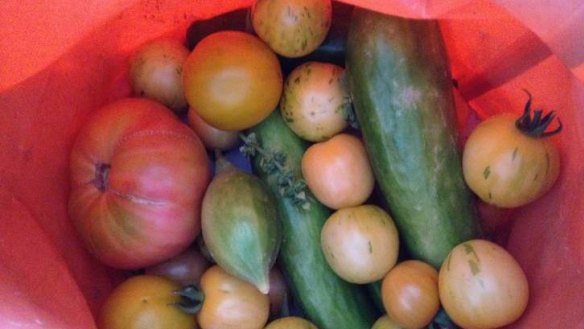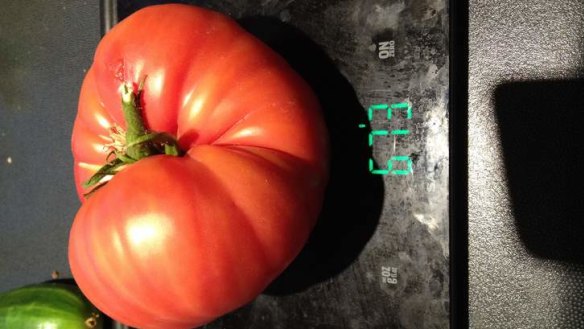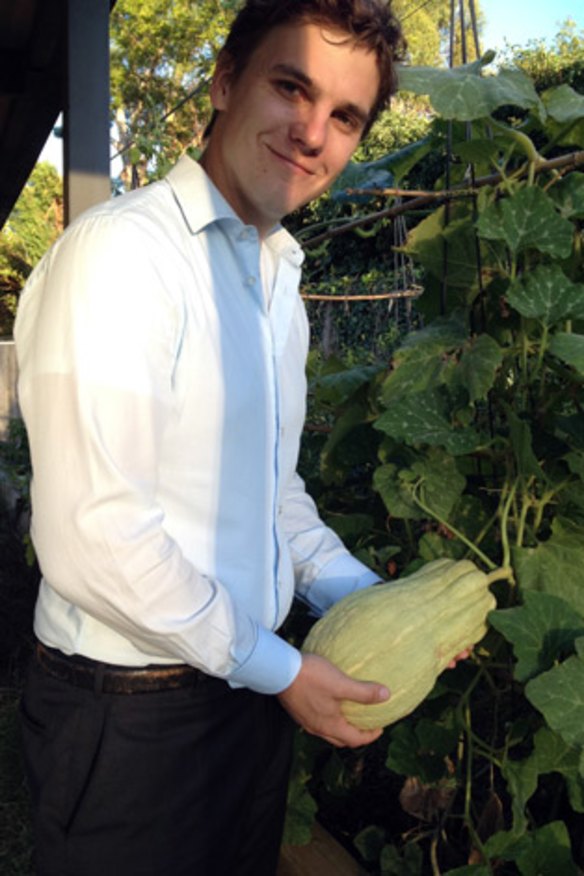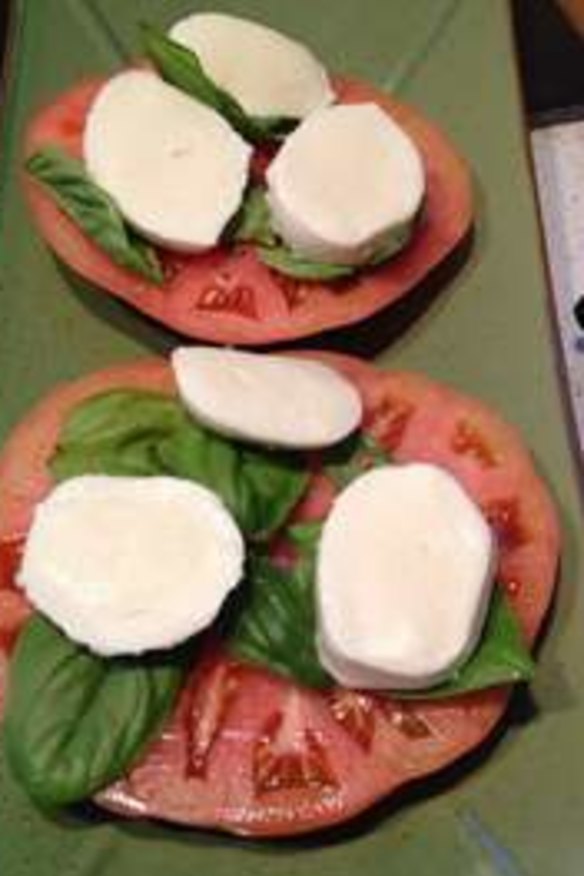The need for seed

It was just a short sentence in a Kitchen Garden column last November in which we offered seeds of Adrian van Leest's Opa's Brandywine tomatoes, but we received requests from 48 readers. The summer drought heatwave meant tricks were needed to get good crops.
Sam Robinson, of Hughes, is likely to be the Opa's Brandywine winner of the biggest tomato. His weighed 673 grams. Last year's winner was Anita Hancock at 548 grams.
Robinson moved to Canberra five years ago for work and study. He and his wife, Maayan Adler, bought a place in Hughes two years ago. Together they have built a large 17-metre x 1.5-metre wicking worm bed for vegetables. It includes a chicken tractor and a worm farm that is three-quarters buried in the soil to protect it from the elements. Robinson estimates he has 10,000 worms, but they tend to stray no more than a few metres from the feeding station. He learnt about wicking beds on the internet when searching for a good watering solution for his plants that might be a more robust option than drippers. The bed has to be watered only once a week in summer, for 30 minutes.

The worm farm was a birthday gift, and the kit came as a standard stack of black boxes from Bunnings. The worms didn't like the heat or the cold and they died, so he took the worm farm apart and buried one of the trays in the garden.
The garden beds were well-mulched last autumn and before spring with lucerne hay and oak leaves from the trees around Hughes. With some care, the leaves turn into spectacular leaf mould to improve the soil. The chicken tractor runs along the bed for six months in winter and it is moved under plum trees in summer. A soil test kit is used to monitor the NPK (nitrogen, phosphorus and potassium) and pH acidity/alkalinity level of the soil.
With a focus on summer crops, Robinson tries to get seeds in the ground early, and in August he planted out half of his edible plants under glass cloches as an experiment. It worked.

His seeds are purchased from Diggers Club and they included non-hybrid golden bantam corn, spaghetti squash, wrinkled butternut pumpkin, Yukomo giant snowpeas, lettuce leaf basil, padron capsicums that are used for tapas in Spain, zucchini, confetti coriander, dill, purple potatoes, jaune et vert scallop squash, Lebanese and double-yield cucumbers.
The couple eats huge salads with the cucumbers and tomatoes, and they made tomato steak caprese with the massive Opa's Brandywine (the first year they have grown some), bocconcini and basil.
One day's harvest, all raised from Diggers seeds, includes Jaune Flamme tomatoes and Gen Y Tommy Toe cherry varieties Violet Jasper, Topaz and Rose de Berne.

Lanyon Plant Fair
On Sunday, March 23, at 11am and 2pm, Clive Blazey, founder of the Diggers Club for gardeners, will give talks on heritage seeds and flowers at Lanyon Annual Plant Fair (admission $10). Blazey was recently inducted as a ''Food Legend'' at the Melbourne Food and Wine Festival.
Diggers
Many Canberra kitchen gardeners buy seed from Diggers and have visited Heronswood at Dromana in Victoria. On January 14, a grass fire on the Mornington Peninsula Freeway carried embers that landed on the thatched roof of their rammed-earth building. The Fork2Fork Restaurant and admin offices were lost. Fortunately, the magnificent gardens and historic Heronswood house, built in 1871, were unscathed.
Winning tomatoes
On February 2, the Royal Botanic Gardens held Sydney's Tomato Festival. The winning People's Choice tomato in a public taste test was Wapsipinicon Peach, an opaque yellow tomato with tiny hairs like a peach. Second was the charcoal-fleshed Black Russian and third the apricot-hued Jaune Flamme. All were heirloom varieties. A panel of VIPs, chefs, foodies and writers voted the Green Grape tomato, with olive-green fruit on a dwarf plant, the top score of 100 (60 for taste, 20 for appearance and 20 for texture). Second was Rose de Berne and third was Aunt Ruby's German Green.
>>Susan Parsons is a Canberra writer.